
Indian Territory and the Indian Territories are terms that generally described an evolving land area set aside by the United States government for the relocation of Native Americans who held original Indian title to their land as an independent nation-state. The concept of an Indian territory was an outcome of the U.S. federal government's 18th- and 19th-century policy of Indian removal. After the American Civil War (1861–1865), the policy of the U.S. government was one of assimilation.
In Lakota spirituality, Wakan Tanka is the term for the sacred or the divine. This is usually translated as the "Great Spirit" and occasionally as "Great Mystery".
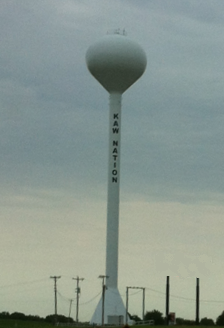
The Kaw Nation is a federally recognized Native American tribe in Oklahoma and parts of Kansas.

The Iowa, also known as Ioway, and the Bah-Kho-Je or Báxoje, are a Native American Siouan people. Today, they are enrolled in either of two federally recognized tribes, the Iowa Tribe of Oklahoma and the Iowa Tribe of Kansas and Nebraska.
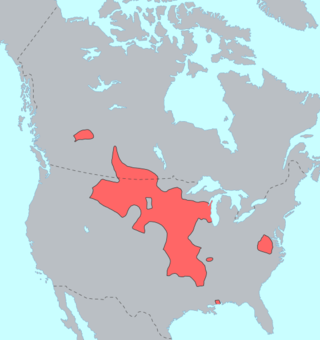
The Western Siouan languages, also called Siouan proper or simply Siouan, are a large language family native to North America. They are closely related to the Catawban languages, sometimes called Eastern Siouan, and together with them constitute the Siouan (Siouan–Catawban) language family.

Osage is a Siouan language that is spoken by the Osage people of the U.S. state of Oklahoma. Their original territory was in present-day Missouri and Kansas but they were gradually pushed west by European-American pressure and treaties.

The Ponca people are a nation primarily located in the Great Plains of North America that share a common Ponca culture, history, and language, identified with two Indigenous nations: the Ponca Tribe of Indians of Oklahoma or the Ponca Tribe of Nebraska.
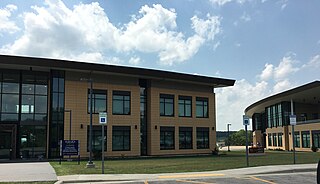
The Osage Nation is a Midwestern American tribe of the Great Plains. The tribe developed in the Ohio and Mississippi river valleys around 700 B.C. along with other groups of its language family. They migrated west after the 17th century, settling near the confluence of the Missouri and Mississippi rivers, as a result of Iroquois expansion into the Ohio Country in the aftermath of the Beaver Wars.
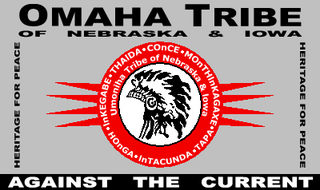
The Omaha are a federally recognized Midwestern Native American tribe who reside on the Omaha Reservation in northeastern Nebraska and western Iowa, United States. There were 5,427 enrolled members as of 2012. The Omaha Reservation lies primarily in the southern part of Thurston County and northeastern Cuming County, Nebraska, but small parts extend into the northeast corner of Burt County and across the Missouri River into Monona County, Iowa. Its total land area is 307.03 sq mi (795.2 km2) and the reservation population, including non-Native residents, was 4,526 in the 2020 census. Its largest community is Pender.

The Quapaw or Arkansas, officially the Quapaw Nation, is a U.S. federally recognized tribe comprising about 5,600 citizens. Also known as the Ogáxpa or “Downstream” people, their ancestral homelands are traced from what is now the Ohio River, west to the Mississippi River to present-day St. Louis, south across present-day Arkansas and eastern and southern Oklahoma. The government forcibly removed them from Arkansas Territory in 1834. The tribal capital is Quapaw, Oklahoma.

James Owen Dorsey was an American ethnologist, linguist, and Episcopalian missionary in the Dakota Territory, who contributed to the description of the Ponca, Omaha, and other southern Siouan languages. He worked for the Bureau of American Ethnology of the Smithsonian Institution from 1880 to 1895, when he died young of typhoid fever. He became known as the expert on languages and culture of southern Siouan peoples, although he also studied tribes of the Southwest and Northwest.

Omaha–Ponca is a Siouan language spoken by the Omaha (Umoⁿhoⁿ) people of Nebraska and the Ponca (Paⁿka) people of Oklahoma and Nebraska. The two dialects differ minimally but are considered distinct languages by their speakers.

The Ponca Tribe of Indians of Oklahoma, also known as the Ponca Nation, is one of two federally recognized tribes of Ponca people. The other is the Ponca Tribe of Nebraska. Traditionally, peoples of both tribes have spoken the Omaha-Ponca language, part of the Siouan language family. They share many common cultural norms and characteristics with the Omaha, Osage, Kaw, and Quapaw peoples.

Native American tribes in the U.S. state of Nebraska have been Plains Indians, descendants of succeeding cultures of indigenous peoples who have occupied the area for thousands of years. More than 15 historic tribes have been identified as having lived in, hunted in, or otherwise occupied territory within the current state boundaries.
The Dhegihan languages are a group of Siouan languages that include Kansa–Osage, Omaha–Ponca, and Quapaw. Their historical region included parts of the Ohio and Mississippi River Valleys, the Great Plains, and southeastern North America. The shared Dhegihan (Degihan) migration history and separation story places them as a united group in the late 1600s near the confluence of the Ohio and Tennessee rivers which then moved westward towards the Missouri River, and separated into different bands. However, some oral traditions and archeological evidence indicate that Dhegihan speaking peoples may have migrated west out of the Ohio River Valley much earlier.

Several Native American tribes hold or have held territory within the lands that are now the state of Iowa.

Quapaw, or Arkansas, is a Siouan language of the Quapaw people, originally from a region in present-day Arkansas. It is now spoken in Oklahoma.
The Dhegihan migration and separation was the long journey on foot by the North American Indians in the ancient Hą́ke tribe. During the migration from present-day Illinois/Kentucky and as far as Nebraska, they gradually split up into five groups. Each became an independent and historic tribe. They are the Omaha, Ponca, Kaw or Kansa, Osage and Quapaw.
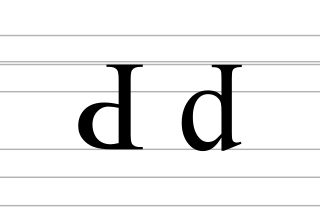
Turned P is an additional letter of the Latin script which was used in the orthographies of certain Siouan languages, mostly by James Owen Dorsey in the 19th century. Its lowercase form is used in the Anthropos alphabet, the phonetic alphabet of the journal Anthropos.













